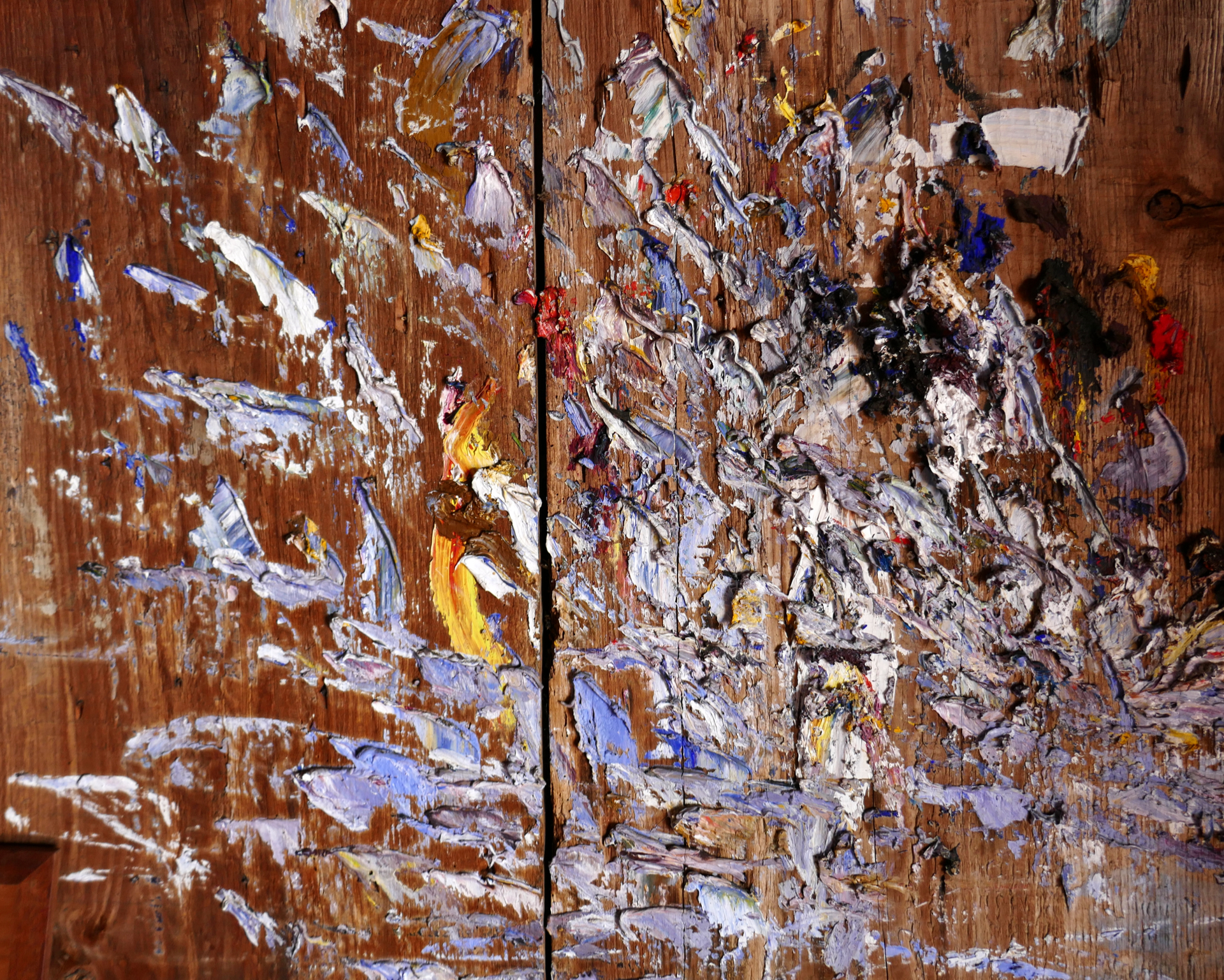In 2018, our friends Peter Engeldrum and Carol Keller invited Kate and me to spend a few days with them on Maine’s North Haven Island. It proved to be a more productive visit than any of us anticipated.
First… A “Found” Abstract
During a tour of the American Impressionist Frank W. Benson’s island summer home (now a museum), we poked into his huge barn/studio. And on its rear wall, found a large area where he blotted his brushes on old wood planks. I couldn’t resist capturing a tiny portion of it in the above “Pollock-ian splatter-work.”
Just feel the raw dynamism of Benson’s random jabs! Note his judicious pops of color (revealing the surprisingly limited palette he used in Maine). Or just admire it for what it is– a lovely accident of time, captured in a one-of-a-kind “abstract Benson print.”
And I don’t call the photo a “Benson” print simply because Frank painted it. It’s also a “Benson” print because dat’s my middle name. So there! (Still, I wouldn’t be so foolish as to try to sell the photo as an original work. The museum director might have something to say about that.)
Then… a Film!
The North Haven visit also lead to my writing a script, shooting stills for, interviewing the model-airplane builder at the heart of, and narrating a very short documentary film about Charles and Anne Lindbergh’s pioneering 1931 “North to the Orient” flight.
Our friend Peter (an image-quality expert, photographer and now videographer) shot and found tons of supporting footage, historical photos, sound files and music… and assembled the result that’s now on the North Haven Historical Society’s website. (Scroll down to the film titled “Sirius 8– A Model of History.”) I think Peter did a really first-rate job!
NOTE: I shot stills of the society’s oversized Sirius-8 model using my Panasonic Lumix ZS100 travel point-and-shoot.
–Dave Powell is a Westford, Mass., writer and avid amateur photographer.
Share this post:









Comments
Bill Brown on Everyday Abstracts: A Frank Benson “Splatter-work” (One-Shot Story)
Comment posted: 20/09/2023
Comment posted: 20/09/2023
Gary on Everyday Abstracts: A Frank Benson “Splatter-work” (One-Shot Story)
Comment posted: 21/09/2023
Comment posted: 21/09/2023
Steviemac on Everyday Abstracts: A Frank Benson “Splatter-work” (One-Shot Story)
Comment posted: 21/09/2023
Dave Powell on Everyday Abstracts: A Frank Benson “Splatter-work” (One-Shot Story)
Comment posted: 21/09/2023
Yes, New England is justly famous for our autumn colors! And in a reply to another comment I noted that Frank Benson's New England farm was the family's summer residence. Hence the lack of fall tones. His favored technique over a period of around 20 years was to use a bright, high-key palette that he softened in places with "dirty colors."
Your question, though, made me do an online image search... where I found very few Benson paintings that obviously depicted fall. And interestingly, many of them were watercolors!
I should add that we also encountered a bit of a mystery in Benson's barn/studio. Three paintings hung side by side in an out-of-the-way hayloft. The large central one (an Arts-and-Crafts style portrait of an Asian woman) was flanked by two smaller paintings of a red-haired girl playing in what appears to be an orange field of grain. Are they "different" Bensons? I don't know.
We weren't actually able to enter the museum to find out. The house was being readied for an afternoon wedding. And-- rather surprisingly-- I've failed several times to find the property owner's email address. So for now, the mystery remains.